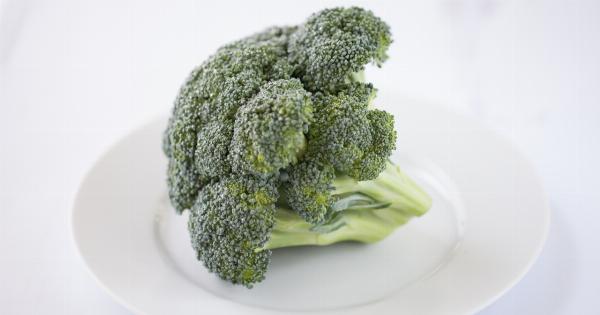Flexitarianism is a relatively new concept that involves eating a primarily vegetarian or plant-based diet but incorporating meat and other animal products in moderation.
This style of eating has gained popularity in recent years due to its health and environmental benefits, and the fact that it is more flexible and realistic than completely eliminating meat from one’s diet.
What is Flexitarianism?
Flexitarianism is a semi-vegetarian diet that emphasizes plant-based foods while allowing some meat and other animal products in moderation.
While there is no strict definition of a flexitarian diet, most people who follow this eating style aim to eat a primarily vegetarian diet but also consume small amounts of meat, dairy products, eggs, and other animal-based foods.
Flexitarianism is sometimes referred to as “casual vegetarianism” or “flexible vegetarianism,” and it is often seen as a more realistic and sustainable approach to healthy eating than completely eliminating meat from one’s diet.
Benefits of Flexitarianism
There are several health and environmental benefits associated with a flexitarian diet:.
Improved Health
Eating a primarily plant-based diet has been linked to a wide range of health benefits, including lower risk of heart disease, cancer, and other chronic illnesses.
By consuming more fruits, vegetables, whole grains, and legumes, flexitarians can increase their intake of vital nutrients, fiber, and antioxidants that are essential for good health.
Weight Management
Reducing intake of meat and animal products while increasing consumption of plant-based foods can help individuals achieve and maintain a healthy weight.
Plant-based foods tend to be lower in calories and fat than meat, which can be beneficial for those looking to shed pounds or maintain a healthy body weight.
Environmental Benefits
Adopting a flexitarian diet can also have a positive impact on the environment.
Meat production is a significant contributor to greenhouse gas emissions, water pollution, and deforestation, whereas plant-based foods require fewer resources to produce and are more sustainable for the planet.
Flexibility and Convenience
One of the greatest advantages of a flexitarian diet is its flexibility and convenience.
Unlike strict vegetarianism, which requires careful planning and preparation to ensure proper nutrition, flexitarianism offers more options and allows for the occasional indulgence in meat or other animal products. This makes it a more realistic and sustainable solution for individuals looking to improve their diet without completely giving up meat or animal-based products.
Challenges of Flexitarianism
While there are many benefits to a flexitarian diet, there are also some challenges to consider:.
Getting Enough Protein
Plant-based sources of protein such as beans, lentils, and tofu can be a great addition to a balanced diet, but they can also be more challenging to prepare and may not be as accessible or convenient as meat.
This can make it difficult for some individuals to consume enough protein, especially if they are very active or have higher protein needs.
Iron and Vitamin B-12 Deficiency
Meat is a major source of iron and vitamin B-12, and reducing consumption of red meat and other animal products can put individuals at risk for deficiencies in these important nutrients.
It’s important for flexitarians to make sure they are getting enough iron and vitamin B-12 from plant-based sources, supplements, or fortified foods.
Social Pressures and Expectations
Flexitarians may face social pressures and expectations from friends, family, and others to either eat meat or fully commit to vegetarianism.
It’s important to stay true to individual needs and goals, and to communicate with others about the reasons for choosing a flexitarian diet.
How to Adopt a Flexitarian Diet
Adopting a flexitarian diet can be a gradual process that involves small, manageable changes to one’s eating habits. Here are some tips to get started:.
Start Small
Begin by setting realistic goals and making small changes to your diet. Swap meat for plant-based alternatives a few days a week, or try adding more vegetables and whole grains to your meals.
Slowly increase your intake of vegetarian proteins such as beans, tofu, and hummus, and experiment with new recipes and flavors.
Choose Quality Over Quantity
When consuming meat or other animal products, choose high-quality, organic, and sustainably sourced options. Try to choose lean cuts of meat and poultry, and limit intake of red and processed meats.
Plan Ahead
Plan your meals and snacks in advance to ensure that you are getting a balanced mix of plant-based and animal-based foods. Keep healthy snacks on hand, and try to cook and prepare meals at home as often as possible.
Be Mindful of Nutrient Intake
Make sure to consume enough protein, iron, and vitamin B-12 from plant-based sources, supplements, or fortified foods. Consider meeting with a registered dietitian to ensure that you are meeting your nutritional needs on a flexitarian diet.
To Meat or Not to Meat? The Bottom Line
Ultimately, the decision to include or eliminate meat from one’s diet is a personal one.
Flexitarianism offers a flexible and realistic approach to healthy eating that can provide numerous health and environmental benefits for those who choose to adopt it.
By emphasizing plant-based foods while allowing for small amounts of meat and other animal products, flexitarians can achieve a balanced, nutritious diet that promotes health and sustainability.


























